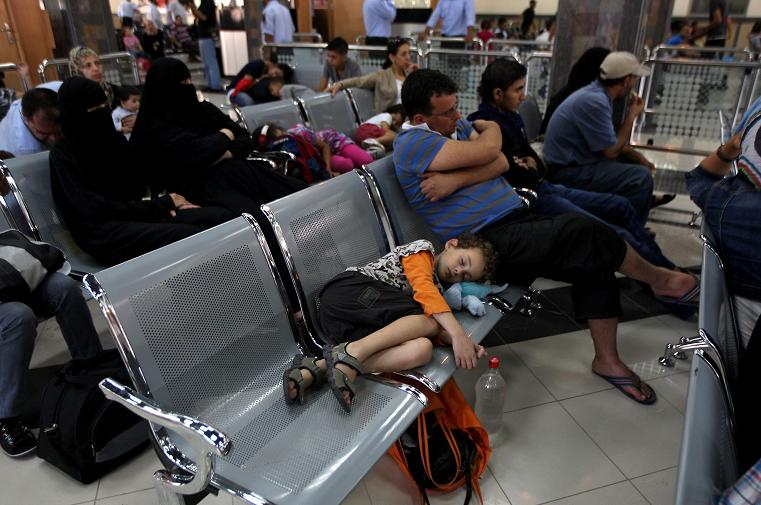The Central Agency for Public Mobilisation and Statistics (CAPMAS) announced in a Monday report the results of a national survey on Egyptian emigration conditions.
Significant facts on Egyptian migration patterns were supported by statistics and were highlighted in the report, in addition to statistics on numbers, working conditions in the immigration countries, and methods of migration.
The report said 98% of Egyptian young males are more likely to emigrate to improve their living conditions and to find jobs with higher salaries so they can start a family and afford living requirements.
The report confirmed the pervious facts that 98% of the migrants are male, whereas only 2% of females plan to emigrate.
The report explained that males emigrate for different reason, with 34% to improve their lives, 25% to find jobs, and 12% for higher salaries.
Some 87% of Egyptians emigrated for economic reasons; 10% for social reasons and 3% for other reasons. Only 14% of youth in their early twenties think of emigrating and a large percent of youth in their mid-twenties and -thirties are attempting to emigrate or have already emigrated.
It further explained that Arab countries are the most targeted counties for migrants, since 67% prefer Arab countries and 11% choose to emigrate to European countries.
Egyptians migrants are currently more present in Arab countries than they are in European countries. About 39.9% migrated to Saudi Arabia, 21% to Libya, 14% to Kuwait, 4% to the UAE, and 6% in other Arab countries. Meanwhile 2.9% of immigrants are currently in European countries, and 0.6% in Northern America.
Regarding the migration process since 2000, 77% of the Egyptians used financial means to facilitate their emigration process and obtain work contracts. According to the report, each individual could pay approximately $10,350 to migrate and to find jobs abroad.
In Arab countries, 47% of migrants work in construction, 12% in commerce, 11% in agriculture, and 7% in manufacturing.
The report said the majority of Egyptian migrants do not plan to return, since 61% of them intend to stay forever in their destination country; only 18% wish to return to Egypt.
The majority of migrants, either in Arab or European countries, regularly send remittances to their families, at 80%.
On international migration, CAPMAS said 68% male and 23% female refugees were obliged to leave their countries due to the deteriorating political conditions. Children under 15 years old are the majority in the refugees category.




